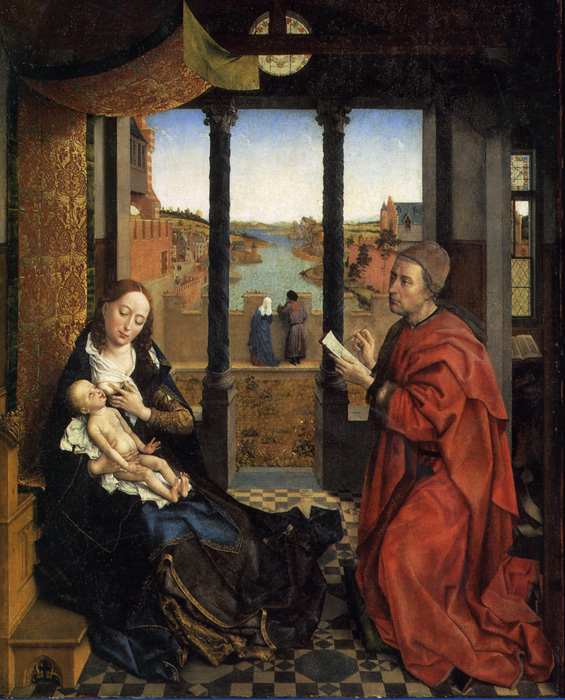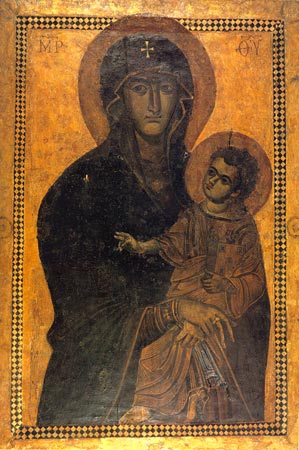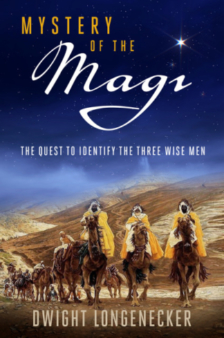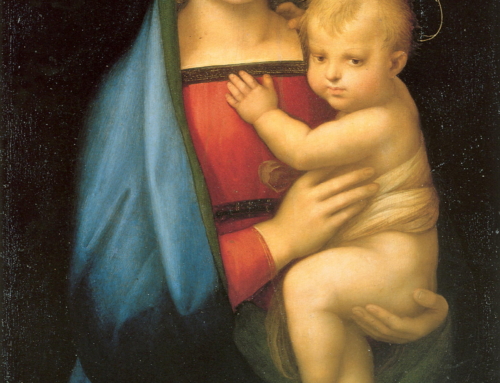Today is St Luke’s feast day. It is Luke who recounts the infancy narratives, and the tradition is that he knew the Blessed Virgin and got the stories about the birth of the Lord straight from her.
The other beautiful tradition is that St Luke was an artist. The image illustrating today’s post shows St Luke painting a portrait of the Virgin. The painting is by the Flemish master Rogier van der Weyden. I like the detail of everyday life you can see through the window.
By the way, tradition has it that the icon of the Virgin in the basilica of St Mary Major in Rome was painted by St Luke.
One of the mainstays of New Testament scholarship is the dating and chronology of the four gospels. The “synoptic problem” is the puzzle scholars try to solve–a puzzle which I happen to think has been complicated by too much analysis.
The “synoptic problem” relates to the first three gospels–Matthew, Mark and Luke which contain not only many of the same stories, but at times the wording and phraseology is very similar. However, they are rarely completely identical.
The scholars have picked over every word and phrase of the original languages, torn the gospels apart trying to figure out if this story was first or that version was first, whether Mark’s gospel was written first or Matthew’s. As soon as one scholar comes up with what he thinks is the answer another scholar picks holes in it and comes up with his own solution.
If you are interested to read more about it Brant Pitre’s book The Case for Jesus is a very readable introduction to the whole area of the authenticity of the gospels.
I sometimes think the whole industry of gospel criticism is a bit like the dull boy who took apart an alarm clock to find time. There’s a quip by Gandalf (I think) who said, “He who breaks a thing to find out what it is has left the path of wisdom.” Scientists and inventors wouldn’t like that quote, but I can see the point. While we can thank the New Testament critics for great insights, too often they have broken the gospels to try to understand them and have only ended up, like the boy with the alarm clock–with lots of useless pieces scattered around.
What is emerging though, is a new consensus which is very encouraging. My research into the gospel of Matthew for my new book The Mystery of the Magi convinced me that the traditional chronology of the gospels: Matthew, Mark, Luke and John was the correct one.
For a long time it was taken as proven that Mark’s gospel was the first one written and that Luke and Matthew were based on Mark. John’s gospel being a completely original composition was always considered the latest one to be written (although the world of New Testament scholarship was rocked by J.A.T.Robinson’s book The Priority of John)
They figured that because Marks gospel was shorter and more truncated it must have been first and Matthew and Luke added and modified it. But of course it could be the other way around and Mark’s summarized and edited down the longer versions. If he was recording the stories from Peter’s point of view Peter might have helped him cut stuff out that Luke and Matthew had included from second or third hand sources.
You see what I mean. The arguments can go both ways. It’s a tennis match. Back and forth. Back and forth.
It has always seemed to me that it was kind of dumb, therefore, to try to decide these questions on the text alone. Much of the New Testament criticism was coming from the Protestant stable of asses, and notoriously ignorant (or scornful) of the early church traditions, they disregarded the early witnesses who said unanimously that Matthew’s gospel was first, Mark’s second and Luke’s third.
This seemed to be a problem, however, because Matthew does seem to be reliant on Mark’s gospel. Another look has provided a fresh understanding and defense of the traditional order of the gospels. The clue is the early witness that Matthew’s gospel was written in Hebrew or Aramaic.(the father say “in his own tongue.”) There is a whole industry of scholarship around this one issue and this article from Catholic Answers lays out the evidence for this very succinctly.
This traditional view is called the Augustinian hypothesis and although there are variations, it can be summed up simply like this: Matthew wrote a collection of sayings and works of Jesus first in Hebrew, but in Aramaic script. Mark depended on Matthew and the preaching of Peter for his gospel. Luke depended on Matthew and Mark.
The final piece of the puzzle is that Matthew’s gospel as we now have it is not written in Hebrew, but in Greek. Therefore the supposition is that Matthew (or another editor) produced a second edition of his gospel in Greek which was influenced by the already existing gospels of Mark and Luke.
This seems like the most probably solution, but I am the NT scholarly equivalent of a poetaster or Sunday afternoon painter. I am an easily bored amateur.
The main thing is not to be too much like the dull boy who took apart the clock, but to read the gospels with an open mind, an open heart and the spirit of courage to encounter Christ and be his disciple.
Finally, what about the date of Luke’s gospel? I’ve written more about the historicity of the gospels here and here. The quick version is this: Luke’s second volume of history is the Acts of the Apostles. This book ends with St Paul being under house arrest in Rome. Both Peter and Paul are both still alive. We know they died in the Neronian persecution around 65 AD. Therefore Acts of the Apostles must be dated before 65 AD.
The gospel of Luke was written before that, so Luke’s gospel must be as early as at least 60-63 AD. If Luke’s gospel was written after Mark’s, and Matthew’s Hebrew-Aramaic collection of stories about Jesus was before that, then Matthew’s original gospel must be somewhere in the 50s AD and some scholars say it was even earlier.
The idea therefore, put out by many New Testament scholars that the gospels are a mish mash of late invented, highly legendary and mythological stories about a Jesus who may have existed in the misty days of time gone by are hogwash.
If you appreciate today’s Catholic blend of Scripture, art, tradition and opinion, then please consider being a Donor Subscriber. Go here to read more about the benefits and how you can help.
Go here to learn more about my exciting new book The Mystery of the Magi–which proves the historical foundations of the story of the three wise men.









Was surfing for info on St Luke & found your blog post. So pleased! Departing from normal curriculum this year with 7th grade RE, got permission to do Bible Study of St Luke & all things St Luke. Great little history, I’ll use for introduction, hope that’s ok & even artwork, planning to have kids “make” an icon inspired by St Luke’s Gospel later in year as a take away. 🙂 Thanks Fr.